Texas’s Big Bend region is a landscape of expansive exposure. Its treasures, however, are often difficult to spot, serenely camouflaged among the sprawling ranges and basins.
The Museum of the Big Bend, on the campus of Sul Ross State University in Alpine, Texas, has long been a hidden gem. Since its establishment in 1920, the museum has recounted the distinct natural history and confluence of cultures of the area; its highlights include a faithful recreation of 17-foot-tall Native American pictograph from the Davis Mountains, architectural legacies of the Spanish occupation, and an epic subterranean map room. The prodigious landscape has also inspired over a century of landscape paintings and photography that are well-represented in the museum’s collections.
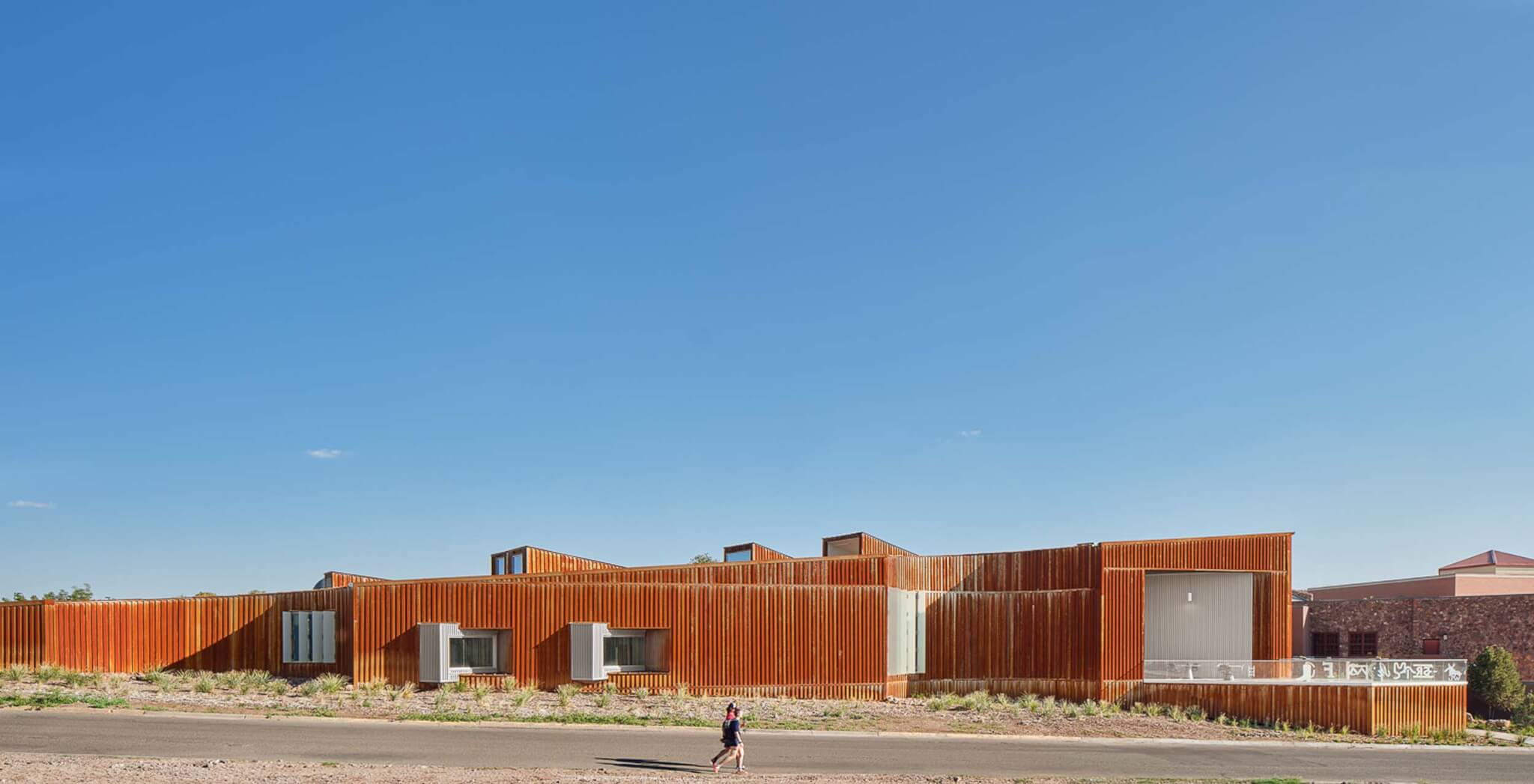
In June, the museum celebrated the opening of a significant expansion, designed by the Austin office of Page Southerland Page. The $11 million, 10,000-square-foot addition dramatically boosts the institution’s capacity and expands its outreach.
Led by Page design director and principal Larry Speck, who is also a former dean of the University of Texas at Austin School of Architecture, the improvement adds event, exhibition, and administrative spaces that complement the existing facility while acting as a modern foil to the historic structure, which was completed in 1937. The core of the museum’s collection remains in the original building, where rustic, iron-rich stone walls support a barrel-vaulted, lamella-framed wood roof. Speck’s enthusiasm for the museum was never in question: “I love love love that old building!”
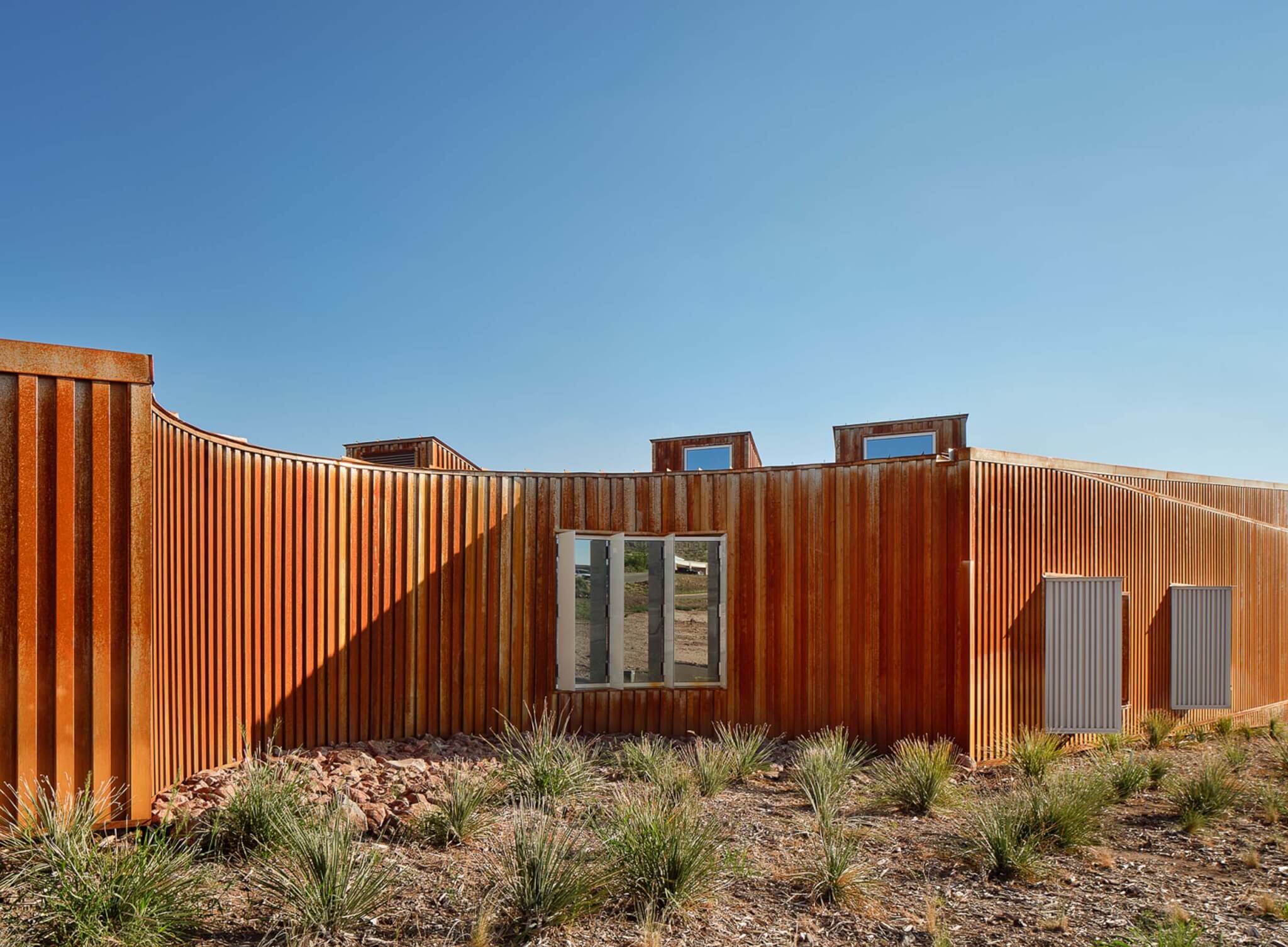
Though a strong regional precedent, Speck asserts that reproducing such stonework in the area is not possible today. On this point he is speaking from experience. Just down the road in Alpine is Page’s federal courthouse, a ground-up project completed in 2007, which includes extensive stonework using local stone that he helped oversee personally to singular effect. But matching the stone and masonry techniques from the 1930s was not a feasible approach. Instead, Speck asked: “What can we do now that has as much presence and as much relevance and authenticity as that stone building had in its time? We started looking at ranch buildings, corrugated metal and rusty ranch structures that had a real authenticity and beauty in that landscape.” Page reinterpreted the notion with Corten cladding and a stepped profile, which, when oxidized, closely resembles the hue of the original building’s stonework and asserts a similar sense of utilitarian robustness.

The geometry of the structure relies on the cladding’s versatility: It accommodates acute angles, oblique planes, and circular inversions—formal moves that establish a thoroughly modern syntax in contrast to the existing structure.
The irregular triangular site was found to have several underground utility corridors that imposed limitations on buildable area. The resulting plan makes a grab for every square foot, pulls back in precise slices when necessary, and tip toes over the line when it can get away with it. These constraints also dictated that the expansion keep its distance from the existing facility: The new and the old massings remain separate, yet are joined by a lighter, lower third element that acts as a common entry for both. This aluminum-and-glass hall spans the underground utilities and serves as an accessible entrance for both campus denizens and the visiting public, who enter from opposite sides.
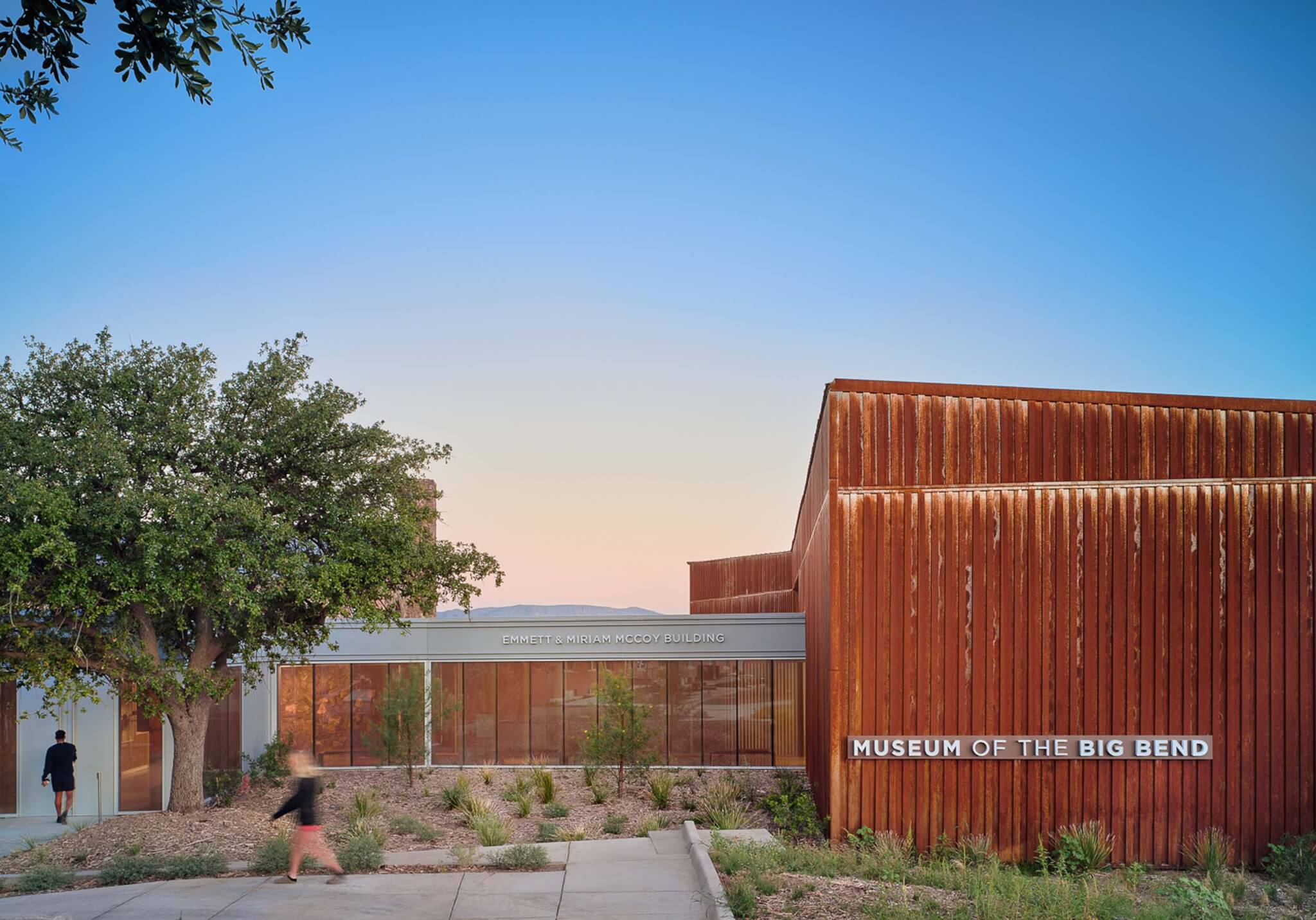
While older buildings in the Big Bend are typically well sited, they rarely open up to the views their sites afford. With the expansion, however, the architecture encourages, if not demands, interactions with the surrounding terrain and sky. Page studied the views from the site: “Right there at that southwest corner you can you really get a beautiful view of the Twin Sisters, and you know, some of the most beautiful mountains out there… So we just got as much view of those mountains as we possibly could,” Speck elaborated.
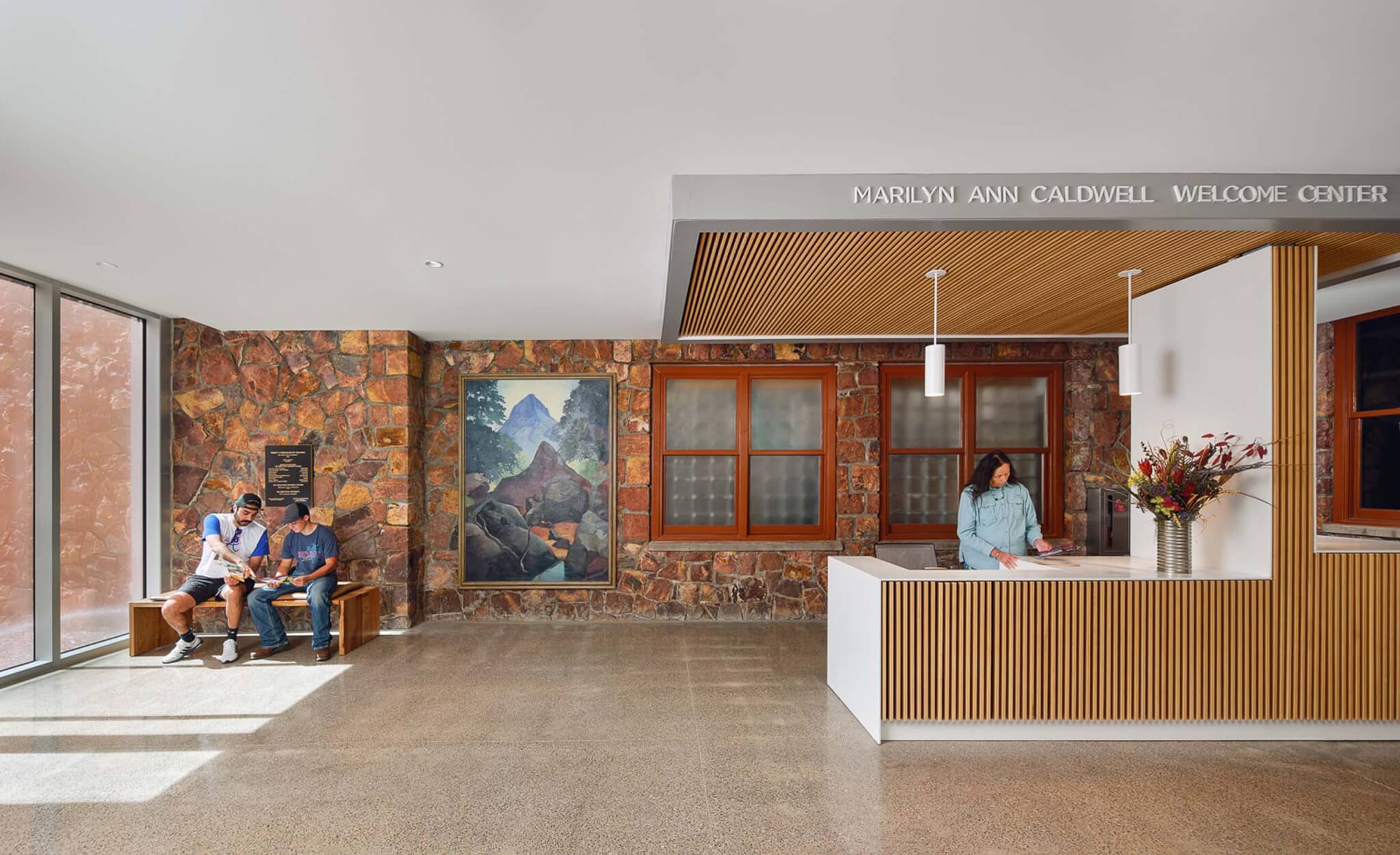
A large, covered patio frames the horizon to the northeast with a large slanted vertical frame that opens up to a slender overlook worthy of a national park. (This feature actually crosses the property line onto a campus-road easement, a move approved by the university.) In the interior, the double-height event space directs views toward the Davis Mountains with an array of tall windows installed in an arcing wall.
Because campus buildings located higher up Hancock Hill look down on the museum, Speck considered the roof as another facade of the building. “It’s too visible from everywhere else so it had to be beautiful. So that was there from the very beginning. We realized that the metal works really well as siding, but it also works really well as roofing. So we could make it all out of the same material, and then really make it a complete object.”

The structure itself attempts to create its own topography on the sloping site. The Corten standing-seam roof begins quite low on the upslope end, then broadens and extends at a slowly ascending slope as it progresses down the hill, suggesting an extension of the ground plane. Cleverly, the mechanical equipment is located in a recessed area within the perceived envelope that both hides the equipment and allows the massing to become nearly level with the site at its back side.

Angular skylights emerge from the roof seemingly at random, like large boulders; on the interior, these lightwells service a central hall used for revolving exhibitions and the works of the region’s storied landscape painters (Speck considers this hall his favorite part of the building). The overall effect is in harmony within the high-desert landscape.
At the main entry, a new courtyard incorporates native grasses and trees and hosts a covered patio. This provides an elevated perspective where visitors can appreciate the venerable older building, preferably while sipping a cocktail at a social event.
The project was initiated by museum staff and local supporters, who hired Page to begin design before the project was green-lighted in order to generate support and fundraise. Speck found inspiration in this grassroots effort: “It was really ranch people who are behind this whole effort, and I never realized there were so many cool ranch people in that region.”
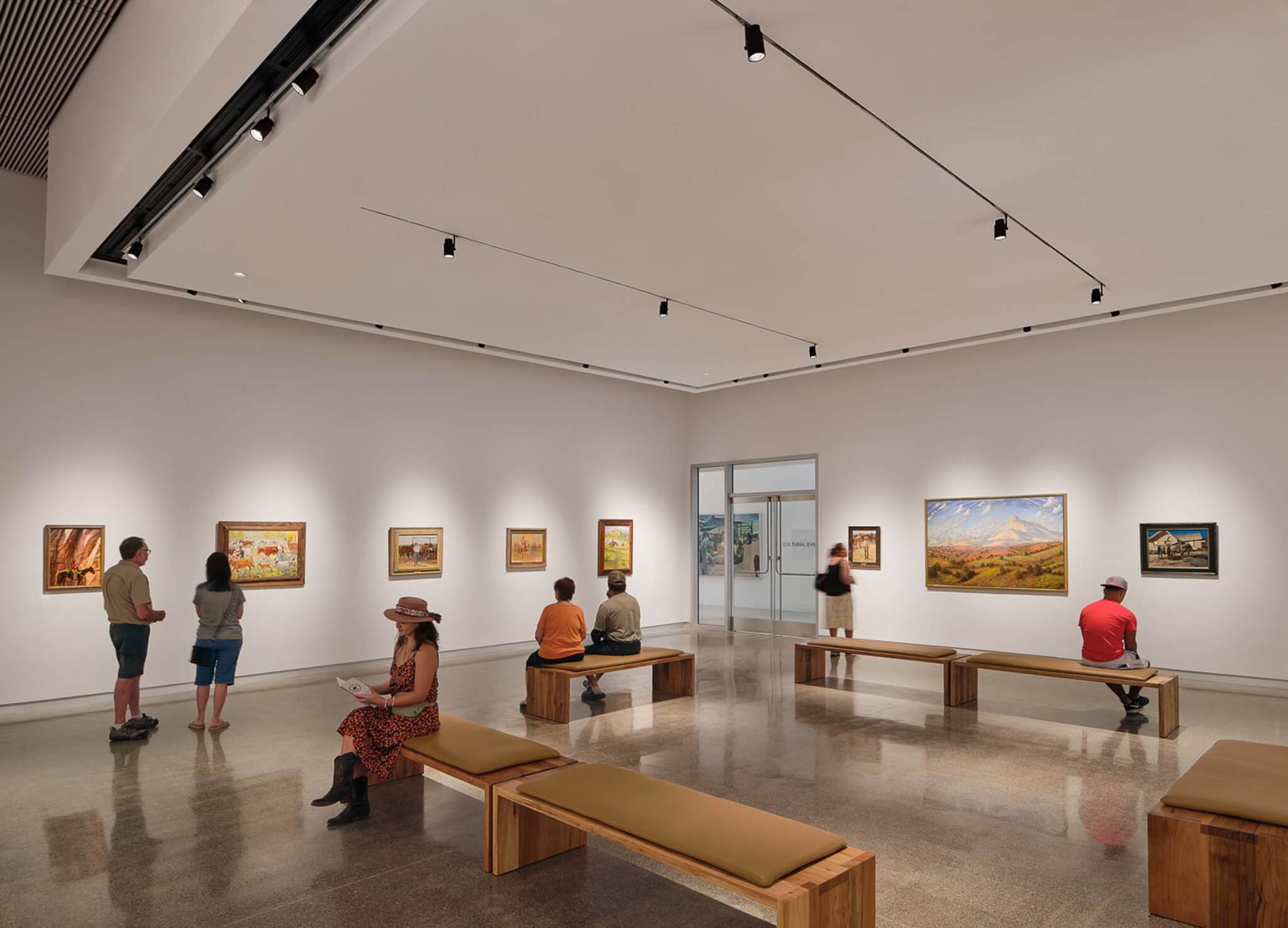
Area ranch owners organized and contributed generously, including a $5 million donation from the McCoy family, who own and operate the McCoy’s Building Supply chain. Their involvement with the museum is long-standing. In the mid-2000s the family also donated $1 million to help save the original museum building from demolition, according to Mary Bones, the museum’s director. Page’s addition is named for Emmett and his wife Miriam.
Bones and the museum’s curators have an ambitious lineup of exhibitions for the new spaces, including the photography of Mexico’s eminent Graciela Iturbide, which remains on view through February 10, 2024. Andy Warhol’s Cowboys and Indians series will be installed later next year.
Stephen Chick Rabourn is an architect in Marfa, Texas.











